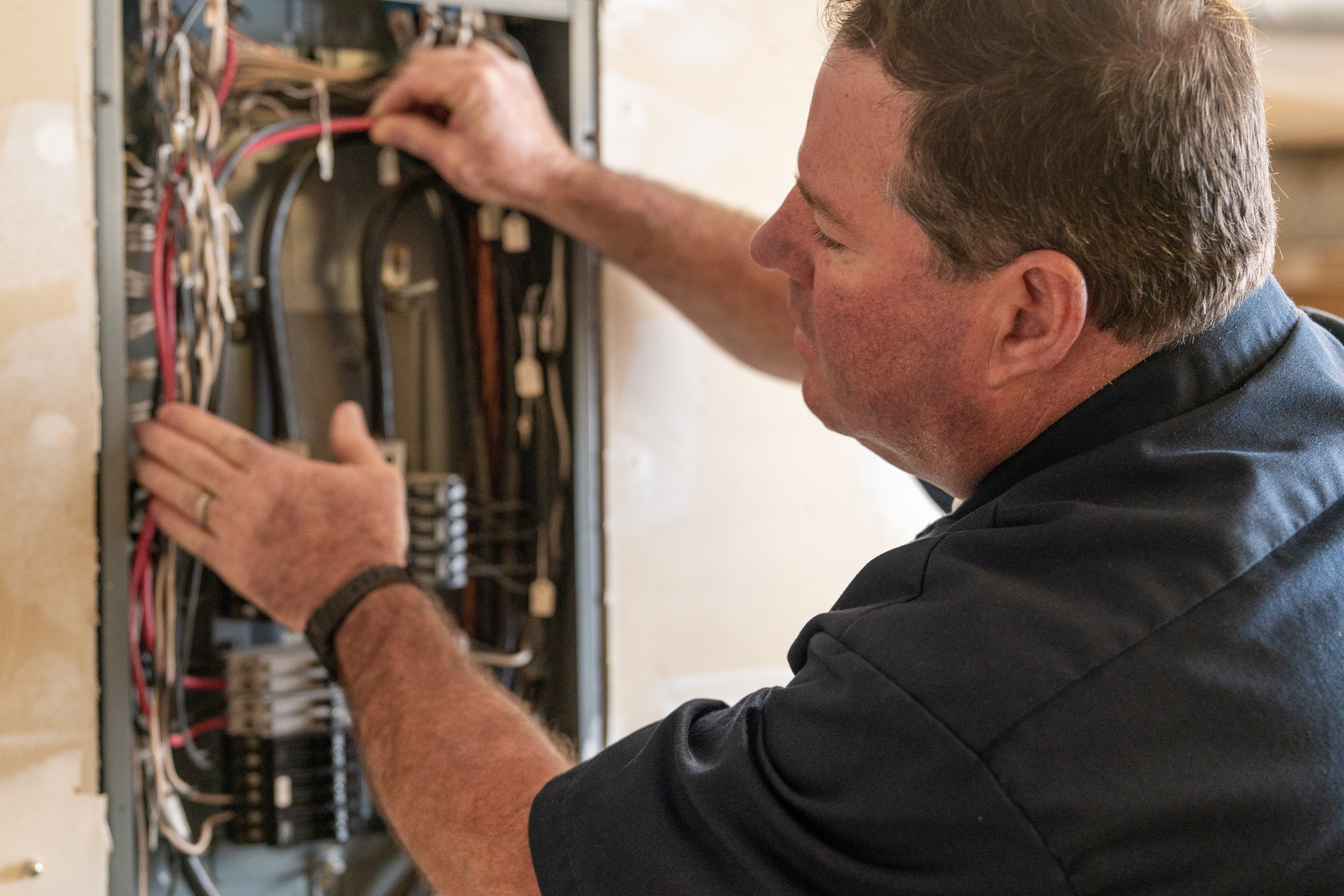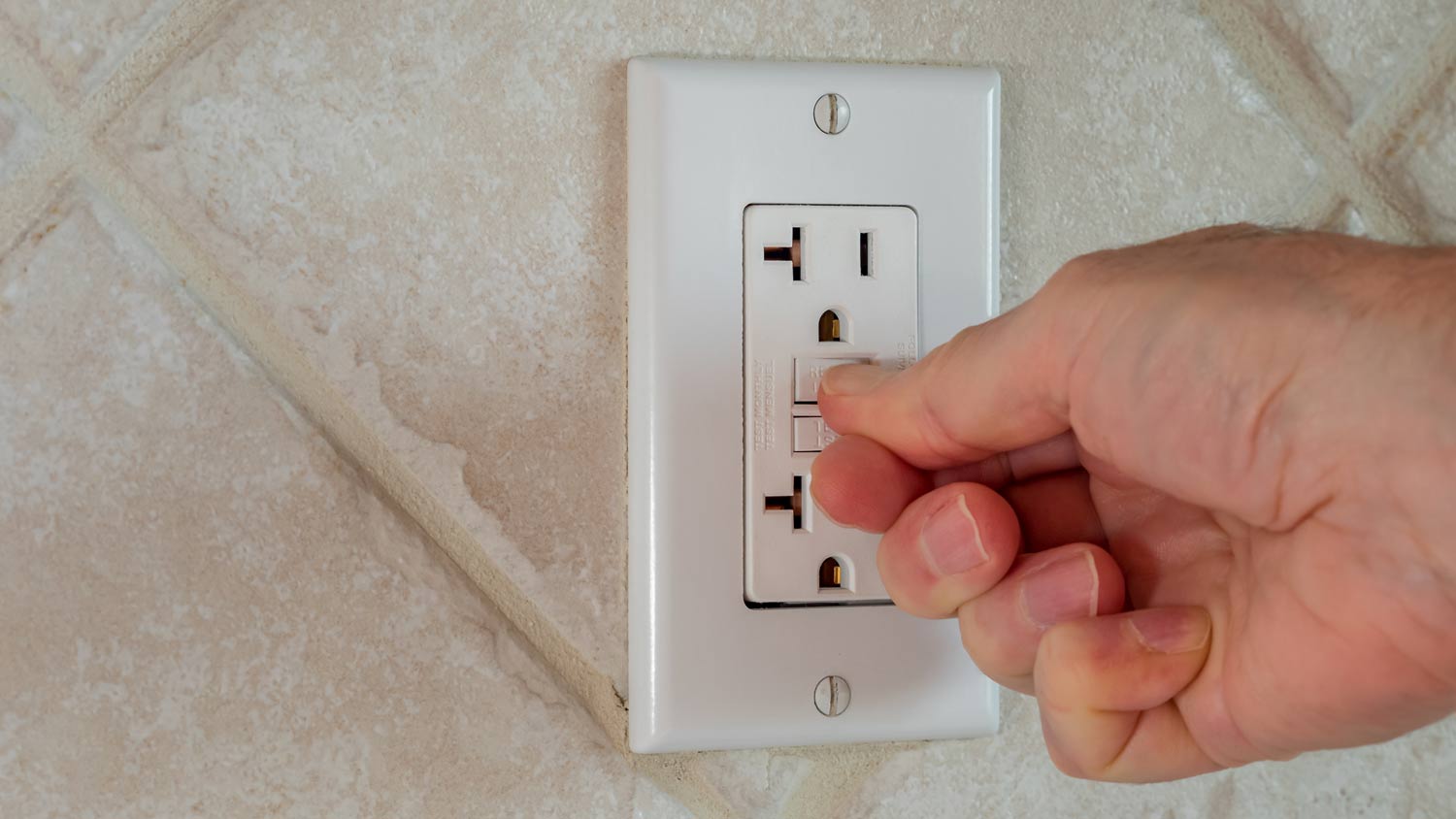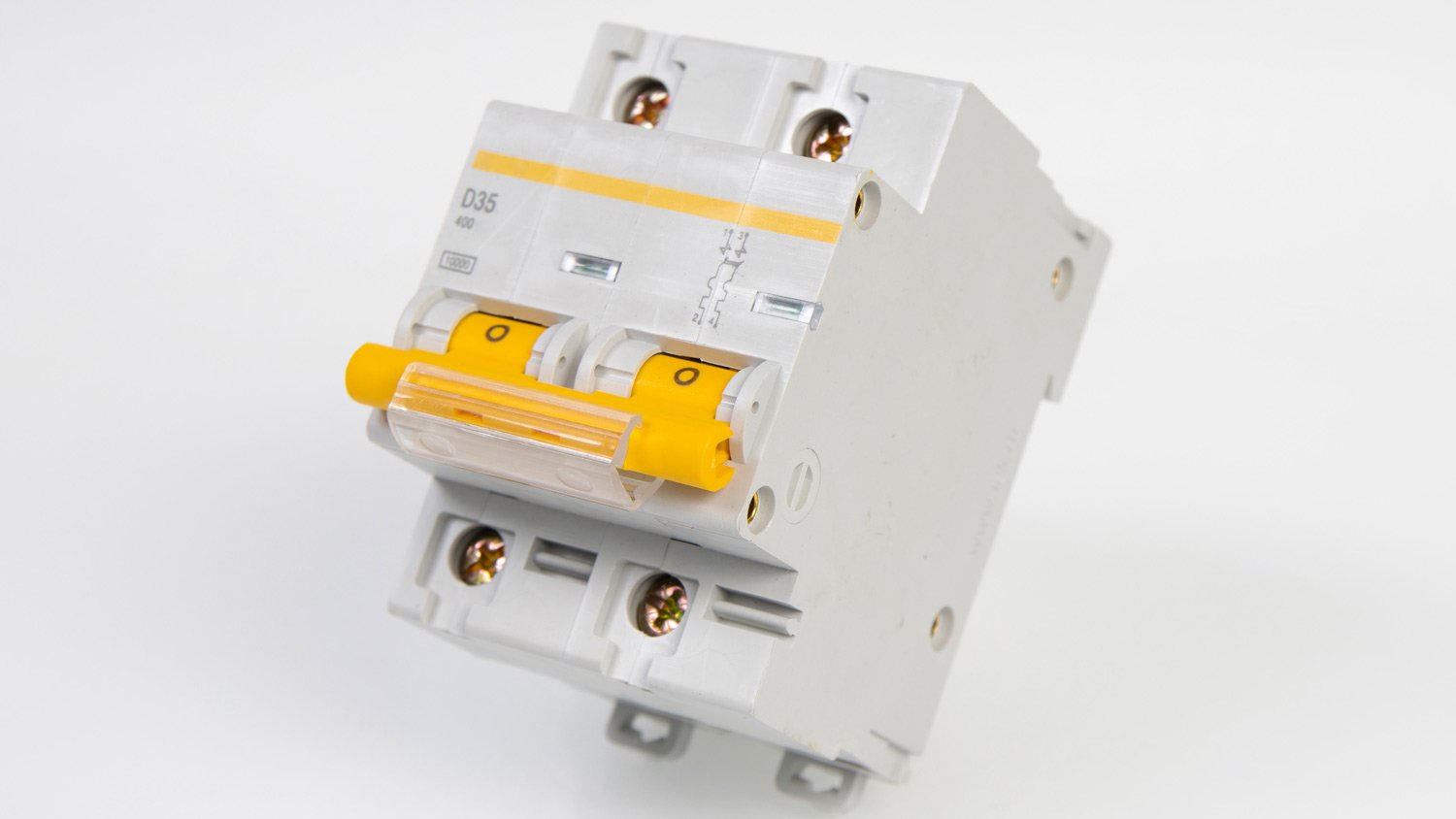
Replacing your electrical panel enhances system reliability and supports modern energy needs. Learn average electrical box replacement costs in New York City.
We break down the different types of circuit breakers for your home


If you’re unsure of the types of circuit breakers, you’ve come to the right place. The function of circuit breakers is to shut off overloaded circuits before they become a serious hazard for electrical shocks, fires, or damage due to power surges. This guide will walk you through the most common types of circuit breakers, their features, and when to hire a professional electrician to install one.


Single-pole circuit breakers are the most common type of circuit breakers. They’re used in residential electrical panels to protect electrical circuits from overloads and short circuits. These are referred to as “single-pole” because they are designed to monitor the current of a single wire and trip in case of a short or electrical overload. They can handle between 15 and 30 amps and provide 120 volts to the circuit.
Since they can shut off circuits quickly by flipping a switch, a common question is whether turning off circuit breakers saves electricity. For example, does shutting off a circuit breaker before vacation conserve energy? While this can seem like an efficient solution, circuit breakers can wear down over time with frequent use, so it’s best to only use them for their intended purpose.
| Pros | Cons |
|---|---|
| Affordable | May wear down from frequent use |
| Easy to install | Not suitable for high-capacity (240-volt) appliances |
| Widely available | No ground or ARC fault protection |
Best For: Bedrooms, living areas, and other spaces with no water/plumbing.

Double-pole circuit breakers are designed to monitor the flow of electricity through two wires at the same time. You can easily identify these as a single breaker with two interconnected, side-by-side switches. These breakers are designed to trip if one or both of the wires short out or become overloaded. They can deliver either 240 volts or 120/240 volts to an electrical circuit and can accommodate a range of amperages from 15 to 200 amps.
| Pros | Cons |
|---|---|
| Manages 240-volt circuits, suitable for large appliances | More expensive than single pole breakers |
| Distributes electrical load more evenly across circuits, reducing strain on individual breakers | Installation and wiring can be more complex, often requiring professional expertise |
| More durable and reliable than single-pole circuit breakers | Takes up two slots in the breaker panel |
Best for: Circuits that supply power to high-energy-consuming appliances such as washing machines and dryers.

GFCI circuit breakers provide protection against ground faults, which occur when an unintentional electrical path occurs between a power source and a grounded surface. This happens when electricity escapes from its intended path (through wires or devices) and finds an alternative path to the ground.
Ground faults can be extremely dangerous because they can cause electrical shocks, burns, or even fires if the electricity flows through a person’s body or a conductive material. A GFCI outlet is specifically designed to prevent electrocution and is mandated by the National Electrical Code® for certain areas of a home, especially those susceptible to water exposure.
It’s important to note that GFCIs are more complex to install, and improper installation may prevent them from functioning properly, or potentially lead to premature wear and tear. It’s highly recommended to have GFCI outlets installed by a qualified local electrician.
| Pros | Cons |
|---|---|
| Protects against electrical shock by detecting ground faults and shutting off power instantly | More expensive than standard outlets |
| Easily resets with a button on the outlet, making it convenient to restore power | May require replacement more frequently than standard outlets, especially in high-moisture areas |
| Prevents electrical fires by interrupting the circuit when an imbalance is detected | Installation is more complex; professional installation is highly recommended |
Best For: Bathrooms, kitchens, and other wet areas where electrical shock risk is higher.

AFCI circuit breakers will trip when they detect arcing within electrical wiring. This happens when an electrical cord is damaged or its insulation becomes too thin, posing a significant fire hazard. Unlike standard single-pole and double-pole circuit breakers, AFCI breakers are able to detect electrical arcs, as they are only tripped by excessive heat. These breakers are mandated as part of the electrical code for newer houses.
| Pros | Cons |
|---|---|
| Reduces risk of electrical fires | More expensive than standard breakers |
| Provides enhanced protection for wiring | May require professional installation |
| Required by code in many new homes | Can be sensitive to harmless arcs |
Best For: Bedrooms, living areas, and anywhere to prevent electrical fires.

Dual-function circuit breakers combine the features of GFCI and AFCI breakers, offering protection against both ground and arc faults. They are suitable for areas requiring both types of protection and are required by the National Electrical Code for both kitchens and laundry rooms.
Prior to the development of these breakers, homeowners had to use both an AFCI breaker and a GFCI receptacle to ensure both levels of protection on a single circuit. If your home is relatively new or if you’ve recently updated your electrical panel, you might find these dual-function breakers in your panel instead of standard GFCI or AFCI breakers.
| Pros | Cons |
|---|---|
| Combines the features of AFCI and GFCI, protecting against both arc faults and ground faults | More expensive than single-function breakers |
| Reduces the risk of electrical fires and protects against electrical shock | Installation can be more complex, often requiring professional expertise |
| Meets code requirements for multiple areas | Dual functions can make troubleshooting and maintenance more complex |
Best For: Areas needing both ground fault and arc fault protection, like kitchens and laundry rooms.
A smart circuit breaker is an advanced type of circuit breaker that integrates with home automation systems, allowing remote monitoring, control, and protection of electrical circuits. Unlike traditional breakers, smart circuit breakers offer remote access through smartphone apps or web interfaces, allowing users to monitor real-time energy usage, receive alerts for unusual activity, and control circuits from anywhere. These types of circuit breakers provide advanced features, such as energy usage tracking and automated shutdowns.
| Pros | Cons |
|---|---|
| Remote monitoring and control | Higher cost than traditional breakers |
| Advanced safety features | Requires a compatible home automation system |
| Energy usage tracking | Complex to set up |
Best For: Smart homes and modern buildings needing advanced monitoring and control.
From average costs to expert advice, get all the answers you need to get your job done.

Replacing your electrical panel enhances system reliability and supports modern energy needs. Learn average electrical box replacement costs in New York City.

Rewiring a house in New York City can fix out-of-date wiring and provide electrical systems with modern capabilities, but owners must plan for the electrician's costs appropriately.

How much does it cost to add an electrical outlet in New York City? Explore typical price ranges, permitting needs, and what drives cost in NYC homes.

Learn how to find wires in your walls so you can avoid danger the next time you need to drill holes in a wall for a DIY project.

Are there outlets not working in one room in particular? Learn what could be causing the issue and how to solve the problem.

Nothing’s more luxurious than your own hot tub after a long day. Maximize your enjoyment by hiring an electrician to wire your hot tub properly.